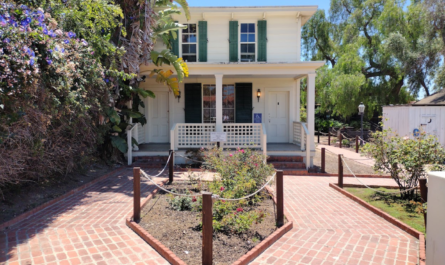Early Explorations and Context
In the mid-18th century, Spain sought to expand its territories in North America and solidify its claims against encroaching European powers. The Spanish Crown, along with the Catholic Church, embarked on a mission to establish a series of religious and military outposts along the California coast. This endeavor was part of a broader strategy to convert the indigenous populations to Christianity and integrate them into Spanish colonial society.
The Arrival of the Portolá Expedition
In 1769, the Spanish Crown sent the Portolá expedition, led by Gaspar de Portolá, to explore and establish settlements in Alta California. Accompanying the expedition was Father Junípero Serra, a Franciscan missionary dedicated to founding missions to evangelize the native peoples. After a grueling journey, the expedition arrived at a site near present-day San Diego.
Founding of Mission San Diego de Alcalá
On July 16, 1769, Father Junípero Serra and his companions gathered to dedicate the first mission in Alta California, Mission San Diego de Alcalá. The mission was named in honor of Saint Didacus of Alcalá, a Spanish Franciscan lay brother known for his humility and devotion. The dedication ceremony was a solemn event marked by the celebration of Mass and the singing of hymns, reflecting the deep religious significance of the occasion.
The site chosen for the mission was strategically located near a native Kumeyaay village, named Kosay, with access to fresh water from the San Diego River. The missionaries immediately set to work constructing a rudimentary chapel and living quarters. The initial structures were simple, built from available materials such as wood, reeds, and adobe.
Challenges and Early Struggles
The early years of Mission San Diego de Alcalá were fraught with challenges. The missionaries faced resistance from the local Kumeyaay people, who were initially wary of the newcomers and their intentions. Additionally, the mission struggled with shortages of food and supplies, exacerbated by its remote location and the difficulties of overland transport from Mexico.
Despite these hardships, Father Serra and his fellow missionaries persevered. They began to teach the Kumeyaay people about Christianity, introducing them to European agricultural practices and crafts. The mission gradually expanded, with the construction of more permanent buildings, including a church, workshops, and living quarters for the missionaries and converts.
Growth and Legacy
Mission San Diego de Alcalá became the cornerstone of the California mission system, which eventually included 21 missions stretching from San Diego to Sonoma. These missions played a crucial role in the colonization of California, profoundly impacting the indigenous populations through the introduction of new religious, cultural, and economic practices.
Father Junípero Serra, who founded nine of the missions himself, was beatified by Pope John Paul II in 1988 and canonized by Pope Francis in 2015. His legacy, along with the missions he established, remains a significant part of California’s history.
Conclusion
The founding and dedication of Mission San Diego de Alcalá on July 16, 1769, marked the beginning of a transformative era in California history. This first mission served as a religious, cultural, and agricultural hub, setting the stage for the establishment of the California mission system and the subsequent development of the region under Spanish, and later Mexican and American, rule.




